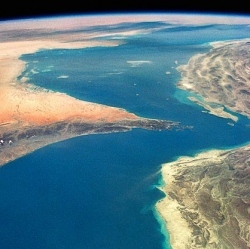
Meteors that have crashed to Earth have been regarded as relics of the early solar system. These chunks of metal and rock are studded with chondrules, glassy grains that were once molten droplets. Scientists have thought that chondrules represent early kernels of terrestrial planets: As the solar system started to coalesce, these droplets collided with dust to form larger planetary precursors.
However, researchers at MIT and Purdue University have now found that chondrules may have played less of a fundamental role. Based on computer simulations, the group concludes that chondrules were not building blocks, but rather byproducts of a violent and messy planetary process.
The team found that bodies as large as the moon likely existed well before chondrules came on the scene. In fact, the researchers found that chondrules were most likely created by the collision of such moon-sized planetary embryos: These bodies smashed together with such violent force that they melted a fraction of their material, and shot a molten plume out into the solar nebula. Residual droplets would eventually cool to form chondrules, which in turn attached to larger bodies, some of which would eventually impact Earth, to be preserved as meteorites.
Brandon Johnson, a postdoc in MIT’s Department of Earth, Atmospheric and Planetary Sciences, says the findings revise one of the earliest chapters of the solar system.
"This tells us that meteorites aren’t actually representative of the material that formed planets, they’re these smaller fractions of material that are the byproduct of planet formation," Johnson says. "But it also tells us the early solar system was more violent than we expected: You had these massive sprays of molten material getting ejected out from these really big impacts. It’s an extreme process."
Johnson and his colleagues, including Maria Zuber, the E.A. Griswold Professor of Geophysics and MIT’s vice president for research, have published their results this week in the journal Nature. To get a better sense of the role of chondrules in a fledgling solar system, the researchers first simulated collisions between protoplanets, rocky bodies between the size of an asteroid and the moon.
The team modeled all the different types of impacts that might occur in an early solar system, including their location, timing, size, and velocity. They found that bodies the size of the moon formed relatively quickly, within the first 10,000 years, before chondrules were thought to have appeared.
